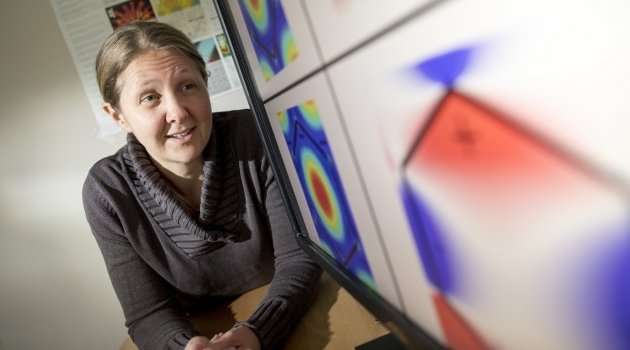On the hunt for new and peculiar superconductors

Annica Black-Schaffer wants to understand unconventional superconductors. The fact that she recently received the prestigious ERC Starting Grant and is a former recipient of grants from the Knut and Alice Wallenberg Foundation is a testament to the interest in her research. One beckoning application is tomorrow's supercomputers.
Superconductors are materials which, at low temperatures, conduct currents with no resistance and without releasing heat. The phenomenon was discovered in 1911 and now has applications such as MRIs, where the necessary cooling is done with helium.
"What I want is to understand unconventional, rather unusual superconductors and their properties and consequences," says Annica Black-Schaffer, senior lecturer and associate professor in materials theory at the Department of Physics and Astronomy.
One example is topological superconductors. Topology in physics is used to describe how a material's properties change and enter different states under different conditions and temperatures, discoveries which gave David Thouless, Duncan Haldane and Michael Kosterlitz the 2016 Nobel Prize in Physics.
Different quantum mechanical wave function
Annica Black-Schaffer explains that in topological superconductors, the quantum mechanical wave function of electrons is different.
"They are superconductors, but they have a metallic condition at the edge or surface. This phenomenon gives rise to majorana fermions which, put simply, are half electrons. An electron is really a fundamental particle that cannot be split up. But in these materials, the electrons have two completely separate parts. It's exactly as if the electron were in two different places at the same time!"
If majorana fermions can also be twisted and caused to change places, then Annica Black-Schaffer and her colleagues may theoretically be on to the solution for a durable quantum computer. In a quantum computer, information is handled in qubits, or quantum bits. A qubit can be a one and zero at the same time, which makes calculations far faster than today's computers, but they are simultaneously much more sensitive to disturbances such as vibrations or temperature changes. The properties of majorana fermions allow a quantum computer to evade this sensitivity.
Mapping properties of materials
She emphasizes that her research is purely theoretical basic research. However, experiments are already underway in several parts of the world, some of which are sponsored by a large software company.
"What we're doing is mapping the properties of the materials and calculating when the majorana fermions appear and under what circumstances."
With initial funding from ERC of SEK 15 million behind her, Annica Black-Schaffer can now continue and also study even more unconventional superconductors with odd frequency dependencies. Electrons, which otherwise avoid one another due to a negative charge, form pairs under superconductivity.
"But some materials have a time dependence between both of the electrons, and then odd-frequency superconductivity can arise," explains Annica Black-Schaffer.
Theorists and experimentalists
There are many more such materials which she and her research group now want to discover and study. One new material they have already found is strontium ruthenate, which is a well-known superconductor with very special properties. Another interim goal is to understand in greater depth what odd-frequency superconductors are, and their experimental consequences.
"As theorists, it is exciting to see what experimentalists make of our models in practice. Or the reverse – they can discover a phenomenon that we sink our teeth into, in an effort to explain it!"
Provided by Uppsala University





















